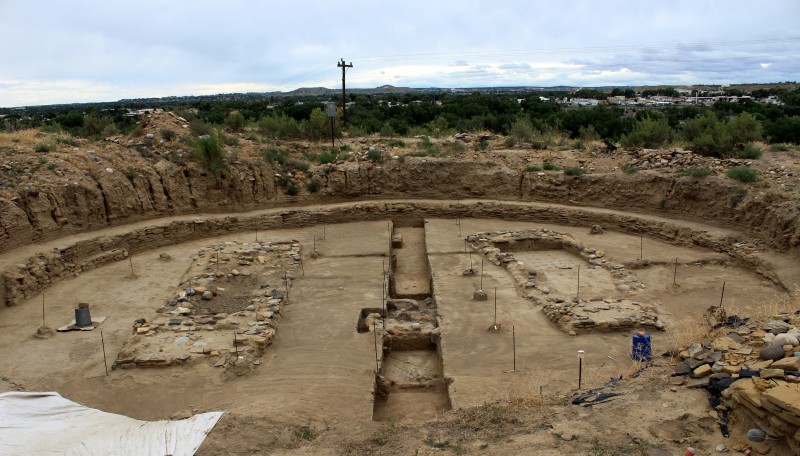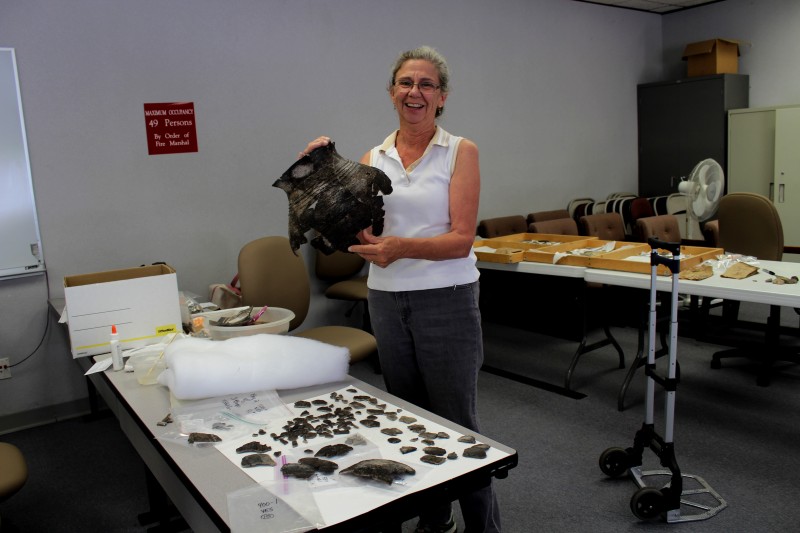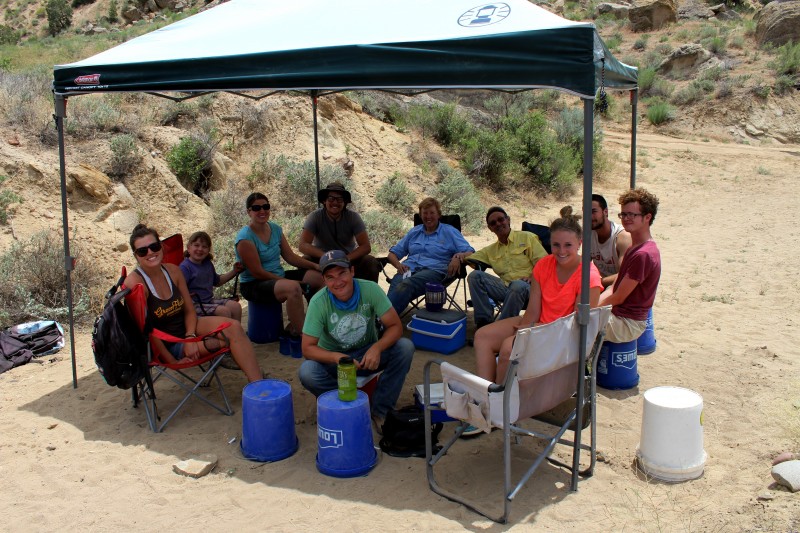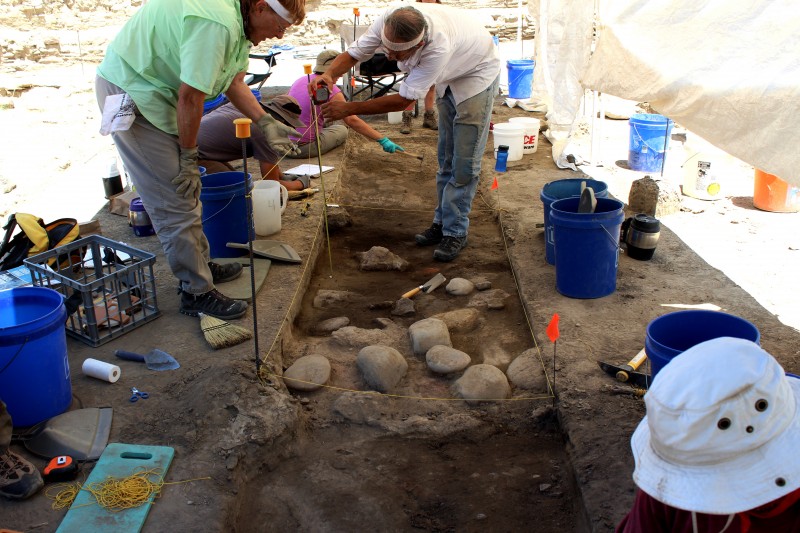Fieldwork
This listing expired on August 10, 2024. Please contact wheelbarger@sanjuancollege.edu for any updated information.





Location: Farmington, NM, US
Season: June 10, 2024 to July 19, 2024
Session Dates: Excavation will be conducted during the first two weeks of the six-week session and lab work in the final four weeks. During the lab weeks we may return to the site for some minimal work. We will also work in some survey experience during the lab weeks or on weekends, particularly for students hoping to work in contract archaeology. Those who are auditing, taking either class for no credit, can attend any portion or all of the six-week session. A PDF Flyer is attached with detailed information. Registration will not begin till April 15, 2024. Students will continue to be allowed to register as long as there is enough time left within the session for them to fulfill their required two-, four-, or six-week attendance. Auditing students can register until July 8th, 2024.
Application Deadline: July 5, 2024
Deadline Type: Rolling
Discount for AIA members: None
Program Type:
Field School
RPA Certified:
No
Affiliation:
San Juan College, 4601 College Blvd., Farmington, NM 87402
Project Director:
Linda Wheelbarger, San Juan College Adjunct Faculty
Project Description:
The San Juan College Totah Archaeological Project field school is the main component of an on-going research project funded by San Juan College (SJC) and Tommy Bolack, owner and manager of the B-Square Ranch. The field school is conducted on the 12,461 acre B-Square Ranch, a combination working cattle ranch, waterfowl conservation area, and museum facility. We are in high desert Colorado Plateau terrain and normally receive only 8 to 12 inches of precipitation a year. It is hot in the summer, but rarely over 100 degrees. Our area is called “Totah” by local Navajos meaning “land amidst water” because of the three rivers which junction at the western edge of Farmington.
This year we will continue work at the Point site, an Ancestral Puebloan ceremonial center. It has a Chacoan style Great Kiva and Middle San Juan style Great House with attached arc of rooms and court kiva in the plaza area. The site dates from the Basketmaker III time period beginning at CE 850 to the final Pueblo III time period of CE 1150-1300. This is planned to be the last year of work at the site with time spent in the Great Kiva and Great House. The site is located at the base of the Shannon Bluffs on the south side of the San Juan River near the city of Farmington, New Mexico.
The 2024 six-week field school session will run from June 10 to July 19, 2024. Two weeks of field work will be followed by four weeks of lab. Tours of local sites and potential survey projects will be discussed as Saturday options.
Two courses are offered concurrently during the official four-week session: a 6 credit ANTH 2120 Archaeology Field School and a 3 credit ANTH 2998 Archaeology Internship. Four weeks of participation are required for the 6 credit ANTH 2120 Field School and two weeks of participation are required for the 3 credit ANTH 2998 Archaeology Internship. The ANTH 2998 students may choose to attend any portion of the 6 weeks as long as the amount of time attended is the equivalent of two weeks, or 80 hours. All students are welcome to stay for the entire field session if they so desire whether they are taking the course for a grade or are auditing the class with no grade.
People interested in attending the field school as a volunteer must register for the ANTH 2998 3-credit internship as Auditing the course (no grade or credits given to the student), and can attend any or all of the session but are not responsible for any course requirements. Students who have previously taken and paid for the field school or internship, are permitted to volunteer with no fees required.
Participants in the field school/archaeology internship course will receive instruction in archaeological excavation and survey including mapping of sites using both compass and tape as well as with handheld GPS units. During the lab, we will conduct laboratory processing of recovered cultural materials and their preparation for curation, drafting, ceramic and lithic artifact analysis, and preparation of some materials to be sent off for analysis. Lectures on southwestern archaeology and contract archaeology, and workshops on artifact and ecofact analysis are included in the session. Tours of Aztec Ruins National Monument, Salmon Ruins, Mesa Verde, Chaco Canyon, and the Navajo pueblitos and rock art of the Largo Canyon area will be organized on weekends as discussed with the students. Tours are optional because many of my students have already been to these sites.
The PDF flyer on this web page contains detailed information on the field school/Internship including a calendar schedule.
Monday June 10th, the first day of the first week of field school is a class day orienting students to the project, fieldwork procedures and practices, and archaeology of the Southwest. Tuesday activities will consist of a half day tour of the Ancestral Puebloan and Navajo sites and rock art on the Ranch followed by the beginning of excavation at Point site. Excavation will continue through the first two weeks and the final four weeks will consist of lab work. Lab will consist of cleaning of artifacts, photographing artifacts, entry of artifact data and provenience data, manipulation of that data into tables, drafting of plan views and profiles completed during excavation, typing remarks from excavation forms, and artifact analysis. Our local Southwest Pecos Conference (pecosconference.org) is in August and students are encouraged to attend. I usually give a presentation on the summers work and students are encouraged to present a talk or poster.
We began field schools at Point in 2006 and spent many years working in the Great Kiva. Work on the Great House began in 2017. We have also tested two Late Puebloan small houses and excavated most of an Early Puebloan pitstructure. The 2024 focus will be to finalize all fieldwork at the site, primarily working within the Great Kiva and the Court Kiva within the Great House.
Period(s) of Occupation: Ancestral Puebloan/Anasazi, Basketmaker III through Pueblo III time periods, CE 400-1300
Notes:
Archaeological field school, archaeological field school 2024, American field school, American archaeological field school, Southwest archaeological field school, field school excavation, Anasazi field school, Ancestral Puebloan field school, Chaco field school, Chacoan field school, Point Pueblo field school, field school at Chacoan Outlier, great house, great kiva, great house, Totah, Four Corners field school, New Mexico archaeology field school, San Juan River, Farmington, San Juan College archaeology field school.
Project Size: 1-24 participants
Minimum Length of Stay for Volunteers: For those taking the class for credit: 2 weeks are required for 3 credits and 4 weeks for 6 credits. Those who are auditing can attend any portion of the 6 week session.
Minimum Age: 16, with special stipulations (contact Wheelbarger)
Experience Required: No experience required and no pre-requisites
Room and Board Arrangements:
Room and board are the responsibility of the student, however, for many years I have arranged for non-local students to stay at the Economy Inn motel in downtown Farmington where special rates are given to the students. Students are welcome to find their own lodging, stay at local campgrounds, or may choose to camp for free on Bureau of Land Management land in the vicinity (no amenities). See PDF Flyer for more information. Check out the Farmington New Mexico Convention and Visitors Bureau’s web page that has lots of information on the area (www.farmingtonnm.org). You can also check your smartphone for Realty Agents and Apartment complexes or Airbnb rentals in Farmington or nearby cities. Food costs are dependent on the student, but $100 per week is a very minimal, estimate. For further information contact Linda Wheelbarger at: wheelbarger@sanjuancollege.edu
Cost: Variable.
Transportation: Students without vehicles can ride with other students or when necessary, the director will pick them up and drop them off on workdays.
Academic Credit:
ANTH 2120 Archaeology Field School = 6 credits; ANTH 2998 Archaeology Internship = 3 credits
This is undergraduate credit offered by San Juan College, 4601 College Blvd., Farmington, NM 87402.
Tuition for New Mexico residents is a per credit hour fee of $56.00 plus an additional flat fee of $77.50 for 1-4 credit hours or $185 for 5 or more credit hours.
Tuition for Non-New Mexico residents is a per credit hour fee of $178.00 plus an additional flat fee of $137.50 for 1-4 credits or an additional flat fee of $305.00 for students taking 5 or more credits.
Also, ALL students, both resident and non-resident, must pay a $1.50 activity fee per credit hour and an Equipment and Supply fee of $100 for each 3 credits,
The Equipment and Supply fee covers equipment, vehicle rental, porta-pottie rental, and supply costs.
Total tuition cost for the field school including credit hour fee, additional flat fee, activity fee, and equipment and supply fee is: New Mexico Residents: 3 credits = $350.00; 6 credits = $730.00; 9 credits = $1,002.50
Non-New Mexico Residents: 3 credits = $776.00; 6 credits = $1,582.00; 9 credits = $2,220.50
Linda Wheelbarger
4601 College Blvd.
Farmington
NM
87402
United States
wheelbarger@sanjuancollege.edu
Phone: 505 320-1834 (cell)
The AIA is North America's largest and oldest nonprofit organization dedicated to archaeology. The Institute advances awareness, education, fieldwork, preservation, publication, and research of archaeological sites and cultural heritage throughout the world. Your contribution makes a difference.
Notifications